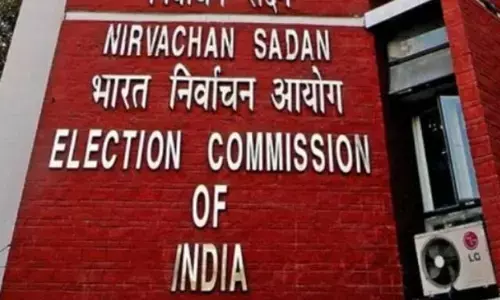Yes Bank net profit rises 10.3 pc as bad loan pile plunges to 2 pc

Private sector lender Yes Bank, which has been down in the dumps since March 2020, on Saturday reported a 10.3 per cent on-year growth in net profit for the June quarter at Rs 343 crore
Mumbai: Private sector lender Yes Bank, which has been down in the dumps since March 2020, on Saturday reported a 10.3 per cent on-year growth in net profit for the June quarter at Rs 343 crore, buoyed by a massive improvement in the asset quality as bad loans plunged to 2 per cent on-year from 13.2 per cent.
However, the bank, majority-owned by other lenders led by the State Bank, reported a robust 69.2 per cent growth in profitability sequentially, the chief executive and managing director Prashant Kumar told reporters on an earnings call. He said gross NPAs plunged to 2 per cent on-year of total advances from 13.4 per cent and 2.2 per cent from the last quarter while the net NPA ratio was flat at 2.4. But provisions for bad loans more than doubled to Rs 360 crore as a large real estate borrower with Rs 400 crore dues became a dud loan during the quarter. This was because fresh slippages jumped to Rs 1,430 crore from Rs 1,072 crore. Of the total slippages, retail contributed Rs 350 crore, down from Rs 433 crore on-year. However, sequentially the provisions plunged 41.7 per cent.
The chief financial officer Niranjan Banodkar explained that net income was also impacted by higher cost ratio that rose 16 per cent to Rs 2,322 crore as the bank has been plagued by an attrition level of over 43 per cent, leading to costly hiring as also new branch expansion which saw 20 more new additions in the quarter. The bank has plans to open 150 branches this fiscal. Kumar said the key net interest income rose 8.1 per cent to Rs 2,001 crore during the quarter while net interest margin inched up 10 bps to 2.5 per cent due to the loan repricing, but repricing of deposits has added 100 bps to his cost of funds and he guided towards more pressure on this front in the ongoing quarter. Non-interest income soared 54 per cent to Rs 1,141 crore on-year and 13.7 per cent on-quarter, driven by robust returns from the treasury operations.
Advances grew 10 per cent to Rs 2,00,204 crore, of which retail advances jumped 31.3 per cent and the SME book rose 24.1 per cent and mid-corporate loans rose 28.9 per cent while large corporate book contracted 29 per cent, taking new sanctions/disbursement stood Rs 24,730 crore, op 10 per cent on-year. Explaining the reason for the tepid advances, Kumar said there were large repayments to the tune of over Rs 3,000 crore from large corporate during the quarter, even as the large corporate book contracted by 29 per cent to pulling down its total share to around 25 per cent and both the officials said they want to grow it to around 30 per cent but pricing remains a deterrent for them and also will be growing at the cost of profitability. Though the bank added 3.55 lakh more Casa accounts, the ratio came down by 140 bps to 29.4 per cent in the quarter due to some large withdrawals.
On the asset quality front, Kumar said the resolution momentum continues to be strong with total recoveries and upgrades touching Rs 1,201 crore and he said the target is to recover at least Rs 5,000 crore this fiscal. Ruling out capital raising, he said the core capital ratio stood at 13.6 per cent now up from 11.9 per cent in Q1FY23 and 13.3 per cent in Q4FY23. Commenting on the numbers, Kumar, who is on deputation from SBI, said, the quarter was steady and we demonstrated significant progress in line with our strategic objectives. While the balance sheet granularity momentum continued, we also delivered a strong growth in our fee income at Rs 1,141 crore on-year led by treasury income, while containing our operating and credit cost.
The focus of the bank is now firmly aligned towards improving the profitability of the franchise, over the coming quarters, we will continue to work on levers which further accelerate this momentum such as improvement in NIMs and Casa ratios, reducing the drag from legacy PSL requirements, further cross-sell and product penetration into our fast-expanding customer base, while continuing to maintain strict controls over costs. On the loan sales front, rural disbursements stood at Rs 717 crore, SME book rose to Rs 6,686 crore, mid corporate book Rs 1,310 crore and large corporate book declined by 29 per cent to Rs 49,500 crore, taking the total balance sheet up 11.7 percent, while overall retail book rose 31.3 per cent. Total deposits rose 13.5 per cent to Rs 219,369 crore of which excluding CDs, deposits growth at 16.2 p














